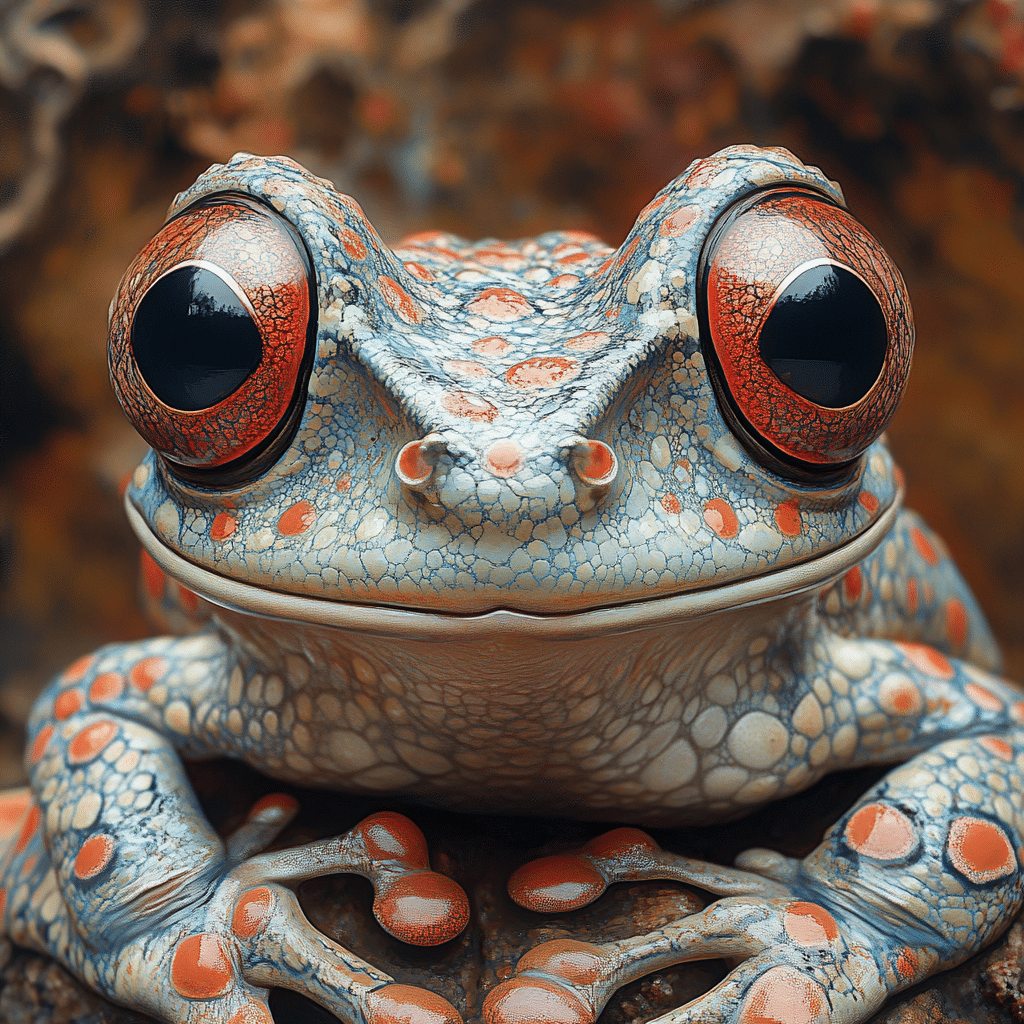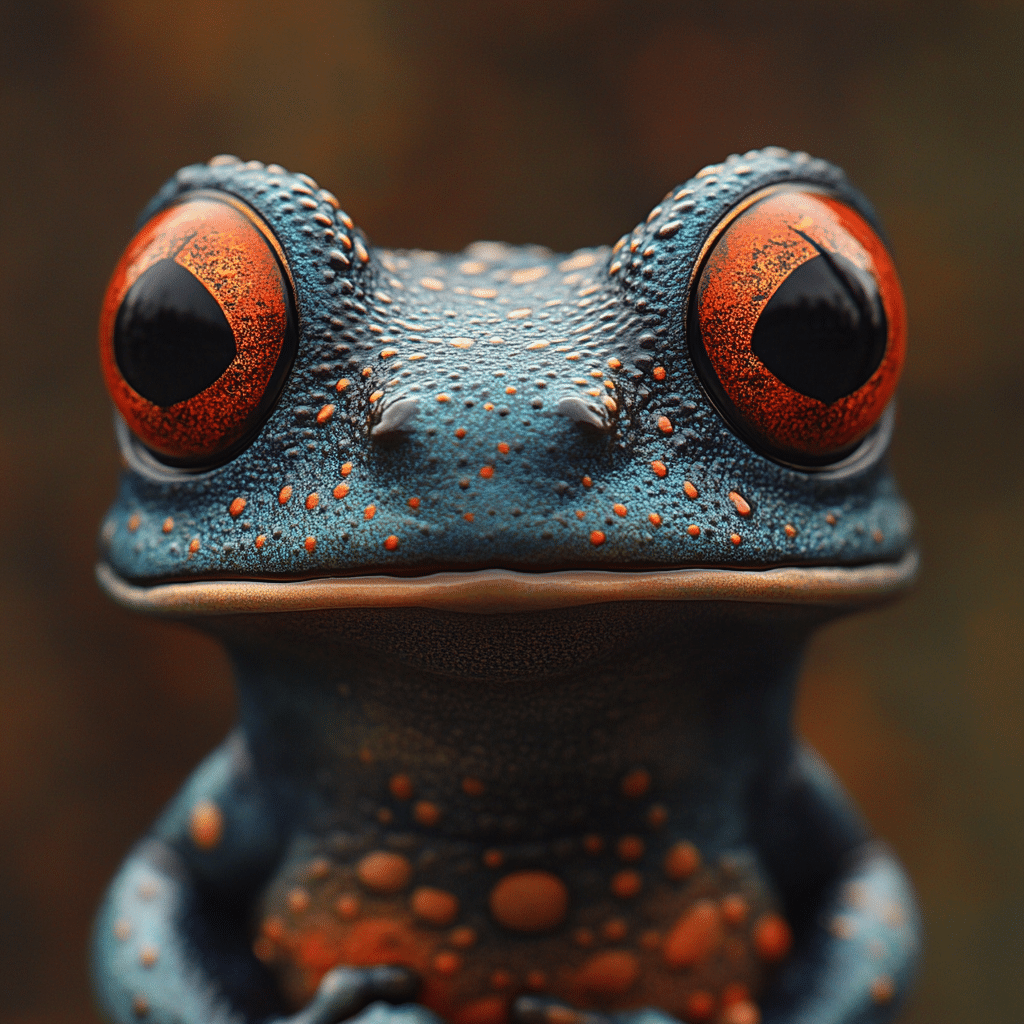The Unique Habitat of the Lake Titicaca Frog
The Titicaca frog, scientifically known as Telmatobius culeus, is an amphibian species endemic to Lake Titicaca, one of the world’s highest navigable lakes. Located between Bolivia and Peru at an astonishing altitude of 3,812 meters, Lake Titicaca supports a unique ecosystem that nurtures this extraordinary frog. The Titicaca frog has adapted impressively to these conditions, utilizing its highly permeable skin to breathe through a process known as aquatic respiration.
Altitudinal Adaptations
The Titicaca frog exhibits remarkable adaptations to thrive in its extreme environment. Its extensive skin folds increase the surface area for gas exchange, allowing it to absorb oxygen directly from the water. These adaptations mean the frogs rarely need to surface to breathe, favoring life fully submerged at the bottom of the lake.
Ecological Significance
As a keystone species, the Titicaca frog plays a critical role in maintaining the delicate ecological balance of Lake Titicaca. Its health signals the overall stability of the lake’s ecosystem, affecting various aquatic and terrestrial species. The decline or extinction of the Titicaca frog could have far-reaching consequences, disrupting the biodiversity of this vital ecosystem.
Endangered Status and Conservation Efforts
Despite its crucial ecological role, the Titicaca frog faces severe threats pushing it towards extinction.
Factors Leading to Decline
Several factors have contributed to the alarming decline of Titicaca frog populations. Unchecked pollution, habitat degradation, and introduced invasive species significantly impact their survival. Climate change exacerbates these issues by altering the lake’s temperature and water levels. Additionally, these frogs are hunted for human consumption and traditional medicine, further dwindling their numbers.
Conservation Initiatives
Several conservation initiatives aim to protect and rejuvenate Titicaca frog populations. The Denver Zoo has collaborated with local organizations for captive breeding programs, intending to reintroduce these frogs back into their natural environment. Furthermore, the International Union for Conservation of Nature (IUCN) lists the Titicaca frog as Critically Endangered, prompting global conservation efforts.

| Category | Details |
| Scientific Name | Telmatobius culeus |
| Common Name | Titicaca Frog, Titicaca Water Frog |
| Status | Critically Endangered (IUCN Red List) |
| Estimated Population | Approximately 50,000 (difficult to estimate due to lake’s depth) |
| Distribution | Endemic to Lake Titicaca, Andes Highlands on the border between Peru and Bolivia |
| Habitat | Fully aquatic, prefers lake bottom but occurs throughout the water column |
| Size | 74.82 mm to 137.95 mm snout-vent length (SVL) |
| Unique Features | Excessive skin folds covering the entire body, adapted to high-elevation aquatic life |
| Lifespan | Up to 20 years in captivity |
| Conservation Efforts | Breeding centers established in Peru and Bolivia, with some individuals in North American and European zoos |
| Threats | Over-harvesting for human consumption, predation by introduced species like trout |
| Symbolic Significance | Represents Andean biodiversity and resilience |
| Observation | Difficult to observe due to preference for lake bottom, but also seen on rock ledges within two feet of water surface (Hutchison et al.) |
| Captive Population | As of early 2019, around 3,000 in breeding centers in Peru, 250 in North American and European zoos |
| Reproduction | Recent breeding initiatives reported in several European institutions |
Challenges and Innovations in Conservation
Conserving the Titicaca frog poses complex socio-economic challenges that necessitate innovative solutions.
Community Engagement
Empowering local communities is essential for successful conservation. Bolivian NGO “Sentinels of the Lake” works closely with locals, emphasizing the frog’s significance for eco-tourism and biodiversity preservation. Grassroots initiatives play a crucial role in fostering sustainable conservation models that benefit both people and wildlife.
Technological Interventions
Technological advancements have significantly aided conservation efforts. Environmental DNA (eDNA) tracking allows researchers to monitor frog populations without intrusive methods. By analyzing water samples for genetic material, scientists can map the presence and health of the frog population efficiently and non-invasively.
The Future Outlook for the Lake Titicaca Frog
While the situation remains dire, there are promising avenues for securing a future for the Titicaca frog.
Policy and Legal Framework
Strengthening environmental regulations and enforcing existing laws are vital steps forward. Both the Bolivian and Peruvian governments are working on legislation to curb pollution and illegal hunting. More stringent measures and enhanced international cooperation could bolster these efforts effectively.
Raising Global Awareness
Raising global awareness is critical. Campaigns like the “Save the Frogs” movement leverage social media and partnerships with international NGOs to highlight the plight of the Titicaca frog. These efforts are crucial for driving funding and garnering broad support for conservation initiatives.

Reimagining Conservation for the Titicaca Frog
The survival of the Titicaca frog requires a multifaceted strategy blending scientific innovation, local involvement, and global cooperation. In the face of environmental challenges, protecting species like the Titicaca frog represents a broader commitment to planetary health. Through relentless efforts and collective action, the Titicaca frog can continue to thrive as a symbol of resilience in Lake Titicaca’s rich and diverse ecosystem.
As detailed by biologist Rosa Elena Zegarra Adrianzén, estimating the current frog population of roughly 50,000 individuals remains challenging due to the lake’s depth. Early 2019 records show around 3,000 frogs at breeding centers in Peru and some 250 in zoos across North America and Europe, painting a grim picture of their critical status. Despite these challenges, ongoing efforts offer hope for the Titicaca frog’s future in their singular, breathtaking habitat.
For thorough insights into environmental changes impacting habitats globally, check out Sandwell Valley and related reports. Understanding how environmental factors influence species like the Titicaca frog helps highlight the complexities of conservation in unique ecosystems.
To grasp the definitions and ramifications of territorial changes, such as meaning encroachment, adds another layer of understanding to the environmental impacts affecting not just regions but species survival too.
The plight and preservation of the Titicaca frog echo the broader narrative of biodiversity conservation necessary for the well-being of our planet.
Titicaca Frog: Endangered Lake Titicaca Dweller
Amazing Adaptations
Did you know the Titicaca frog, named after its home in Lake Titicaca, has some of the largest skin folds among amphibians? These wrinkly folds increase the frog’s surface area, allowing it to absorb more oxygen directly through its skin! However, its peculiar appearance doesn’t make it an easy contender in the frog beauty pageant. Interestingly, another oddball fact is that its skin might remind you of a scene from eroticism nude given its pronounced texture. Despite this, the Titicaca frog still grapples with pollution and needs clean waters to survive.
Cultural Connections
Locals in Peru and Bolivia revere the Titicaca frog, attributing medicinal values to it. It’s believed that drinking a potion made from these frogs can enhance vitality, although there’s no scientific backing. Speaking of curious traditions, imagine stumbling across this while visiting Wythall; it’s a far cry from the scenic British countryside! These cultural beliefs put additional pressure on the species due to overharvesting.
Conservation Challenge
Efforts to save the Titicaca frog are in full swing, yet its numbers are dwindling. Pollution, invasive species, and overconsumption are significant threats. By analogy, it’s like trying to find honest mortgage Lenders near me; the bothersome complexities and hurdles are similar. The global community must rally to preserve this unique species, creating a clean and safe habitat in Lake Titicaca.

How many Titicaca frogs are left?
According to Rosa Elena Zegarra Adrianzén, a biologist with Peru’s Forest and Wildlife National Service, the population of Titicaca frogs is estimated to be around 50,000. However, counting them accurately is difficult because they live at the bottom of a deep lake.
What is the Titicaca frog?
The Titicaca frog is an amphibian native to Lake Titicaca in South America. It’s unique for its extensive skin folds that help it absorb oxygen underwater, allowing it to live entirely aquatic lives, never needing to come out of the water.
Where do Titicaca frogs live?
Titicaca frogs live exclusively in Lake Titicaca, which is located in the Andes on the border between Peru and Bolivia. This high-altitude lake is South America’s largest and the only natural habitat for these frogs.
Why is the Titicaca frog endangered?
The Titicaca frog is critically endangered mainly due to over-harvesting for human consumption and the introduction of non-native species like trout, which prey on their tadpoles.
What is the top predator in Lake Titicaca?
The largest predator in Lake Titicaca is likely the introduced trout. These fish pose a significant threat to native species, including the Titicaca water frog.
What eats the Titicaca water frog?
The Titicaca water frog faces threats from being preyed upon by non-native trout and by humans who hunt them for food.
Why is Titicaca special?
Lake Titicaca is special because it’s the largest lake in South America and it sits at a high altitude in the Andes. It’s also the only natural habitat for the unique Titicaca water frog.
What is true of the Titicaca frog?
The Titicaca frog is a completely aquatic species that spends its entire life underwater. It’s notable for its large size and skin folds, which help it breathe by absorbing oxygen through its skin.
Why should the Titicaca water frog be saved?
The Titicaca water frog is a symbol of Andean biodiversity and protecting it is important to preserve this unique species and the delicate ecosystem of Lake Titicaca. Its survival showcases remarkable adaptation and resilience.
How do Lake Titicaca frogs breathe?
Lake Titicaca frogs breathe through their skin, which is covered in extensive folds to increase the surface area for oxygen absorption. This allows them to live entirely underwater.
Do Titicaca frogs have lungs?
Titicaca frogs do have lungs, but they rely heavily on absorbing oxygen through their skin due to their fully aquatic lifestyle.
Is there a frog that lives in the ocean?
There is no frog that lives in the ocean. Frogs generally need freshwater environments because of their permeable skin, which can’t cope with salty conditions.
What is the nickname of the Titicaca frog?
The Titicaca frog’s nickname is the “Scrotum frog,” which comes from its saggy skin folds that help with underwater breathing.
What does the Lake Titicaca frog look like?
The Lake Titicaca frog has an array of excessive skin folds that cover its body. These folds make them look unique and are a distinctive adaptation for its aquatic life.
What caused the golden frog to go extinct?
Deforestation, habitat loss, and a deadly fungal infection called chytridiomycosis are some major factors that led to the golden frog’s extinction in parts of its range. Conservation efforts are ongoing to protect the remaining populations.



